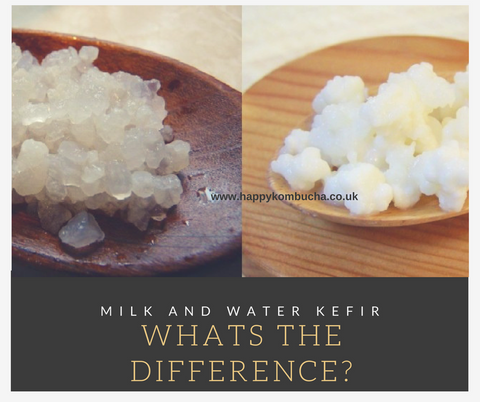
Kefir grains are very sustainable and economical. With gentle care, these grains can be recycled endless times. There are two varieties of kefir grains: water kefir which has a yellowish/clear crystal colour depending on the sugar they have been fed and milk kefir which has a white creamy cauliflower-type appearance. Both are delicious and have many health benefits. Kefir can be taken by all generations, from young to old, male and female. It is safe and nutritious. Since milk kefir grains feed on lactose, kefir is perfect for individuals who are colon sensitive and lactose intolerant. The good thing about kefir is that it is not only curative but also preventive which means you don’t have to be sick to take it and it is safe to drink it everyday.
There are a lot of differences between water kefir and milk kefir. Aside from being cheaper (since you only need water and sugar to prepare it), water kefir is also dairy-free, making it a perfect choice for those who want to avoid dairy or are vegan. Water kefir is a lighter drink, making it easier to drink in larger quantities especially during warm weather for hydration.

Below is a simple summary of the primary differences between a water and milk kefir:
Appearance
- Water Kefir: Yellowish, crystal in color with fizzy, bubbly appearance

- Milk Kefir: White and creamy like curds, cottage-cheese-like appearance

Content and Sources
Water Kefir: Water kefir is non-dairy and is made with fruit juices, coconut water, organic sugar water or as simple as filtered water. Never use tap water since the chemicals in it (chlorine and fluorine) destroy the kefir.
Milk Kefir: Although cows milk is commonly used, milk kefir can also be made from other mammalian sources like goat, buffalo, camel and sheep. Non-dairy products can also be used like coconut milk, soy milk, nut milk and almond milk, however results may vary and nutrient sources are lesser as compared with the dairy milk products. Furthermore, dairy milk is classified as raw, pasteurized and homogenized. Raw milk comes directly from the farm while pasteurized milk is what we usually buy from the grocery. Pasteurization is the process of heating food to prevent or kill bacterial growth. Homogenized milk is pasteurized milk whose milk fatty globules are processed, reduced in size and dispersed throughout the milk. No matter what type of milk you used, kefir grains manage to feed and ferment to any type of milk used (do not use UHT milk with kefir)
Both water and milk kefir grains are reusable starter culture used to make a probiotic-rich drink with live, good micro-organisms in it.
Usage
Water Kefir: Water kefir can be used as a base for a variety of fruit gelatine desserts, salad dressings, popsicles, and non-dairy smoothies. It can be flavoured and is a good alternative for sodas and juices.
Milk Kefir: Milk kefir can be consumed as is or flavoured. It can also be used as a base for salad dressings and smoothies. It is a great alternative for butter, buttermilk or yogurt. Milk kefir can also be made into cheese kefir by straining to remove the whey, making a variety of cheese ranging from soft, spreadable cheese kefir to a cream cheese kefir, or a hard cheese kefir. Milk kefir grains can be used to inoculate cream to make cultured butter or a sour-cream type of dressing. Extra grains may be used as leavening or to soak flour before cooking or to ferment vegetables.
Both can be flavoured by adding in fresh, dried or frozen fruit; flavour extracts such as vanilla extracts, fruit juice; herbs; sweeteners such as maple syrup, and stevia.
Both can be used as a starter culture for fermenting vegetables.
Taste
Water Kefir: Most people prefer water kefir to be plain. Water kefir has a sweeter taste as compared with milk kefir. But the longer you ferment, the sweetness disappear. It also tends to have a slightly fermented flavour. Ginger ale water kefir tastes almost like a beer.
Milk Kefir: Milk kefir has a more strong flavoured cultured milk depending on the level of fermentation. Generally, well fermented kefir has a sourer or tart taste and can be a little bit carbonated.
Learning how to make and maintain kefir grains requires minimal time and effort. Kefir can easily be made at home. It is as easy as one, two and three. For instructions or videos click here.
